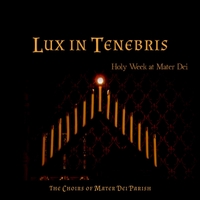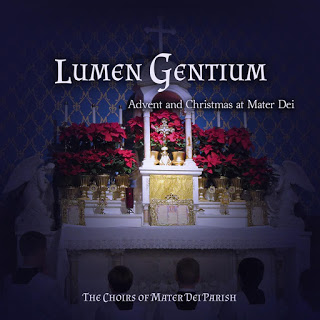Drake’s Christus Factus Est is a five part polyphonic motet based on the gradual of Holy Thursday from the Liber Usualis. I am releasing it under Creative Commons. A PDF download is available below.
Christus Factus Est
Background
Three times during Holy Week, we sing Christus Factus Est: tenebrae on Spy Wednesday (in anticipation of Holy Thursday), the gradual of Holy Thursday, and tenebrae on Good Friday (in anticipation of Holy Saturday). We haven’t had Tenebrae on the evening of Holy Thursday because that is the time the parish has the Mass, foot washing, and Eucharistic procession of Maundy Thursday. As Holy Week was approaching again in 2014, I decided I wanted to compose a polyphonic version.
Looking at the time stamps on various drafts of the composition, it appears I completed it on February 25, 2014, except for minor tweaks. It was too late that year for the choir to begin learning it in time for Holy Week, but we did sing it the following year (2015) during Communion on Holy Thursday.
Discussion
This composition, unlike Missa Spiritus Sancti, is written more in the renaissance style than the classical. The entire chant is embedded (albeit elongated), primarily in the mezzo soprano line. For the highest notes of the chant, the first soprano line takes over.
The range of the piece is significant, with the bass descending to a low E and the first soprano climbing to an A. The tenor also, in imitation of the soprano, sings an A (only once). The piece is divided into sections separated by short intonations from the chant, beginning with Christus.
Christus factus est pro nobis
The piece begins with the tenor intoning Christus exactly as from the chant. The five voices then enter at different times, with the mezzo soprano taking up the chant melody from the tenor. Only in measures 8-14 does the piece deviate from the chant in order to emphasize through a mournful repetition that Christ underwent his agony on our account.
Obediens usque ad mortem
Yet, it is not altogether a mournful thing! It is very much a marvelous truth as well. Hence, the word obediens starts in E minor and quickly transitions to G major, as if to say, “Wow! Christ became obedient for us!” With usque ad mortem, we find ourselves back in E minor, with the haunting, eerie augmentation of D# introduced through ad mortem. Here, the piece may end, if, for example, it is sung for tenebrae of Holy Thursday.
Mortem autem crucis
Christ became obedient for us even unto death, even to death on the cross. Here, the chant on which this motet is based lends itself to almost a dancing of the voices. How deep is that love, even unto the cross! Again, the piece may end here at this cadence if it is sung for tenebrae of Good Friday.
Propter quod et Deus exaltavit ilum
The first soprano takes of the intonation (for it is high). With this introduction, the motet takes on a triumphant tone, emphasizing God’s exaltation of the Lamb who was slain. From measure 47 through 59, the motet dwells on the word illum, imitating the unforgettable climax of the chant. Here, all of the voices take turns imitating the soprano, and trading imitations one with the other.
Et dedit illi nomen
The first soprano keeps the intonation and continues the chant line through this section. The name given to Christ is thus, in the highest voice part.
Quod est super omne nomen
The conclusion of the motet is a recapitulation of certain themes from earlier. Not only this, the name that is above all the other names physically resides in the highest voice (the first soprano) above the other nomens being sung. The first soprano reintroduces the climax of illum from the chant against the chant line which is being sung by the second soprano. Thus, there are two different melodies from the chant line being sung simultaneously in the soprano sections. The alto and tenor imitate the soprano’s illum before the tenor sings omne nomen in imitation of the tenor’s earlier obediens.
Final Thoughts
I am very exited to share this motet. It attempts to communicate a love from the heart that responds to the Sacred Heart of Jesus, Who loved us to death, even to death on the cross. Not enough credit can be given to the unknown monk or monks who composed the chant melody. Surely, they have produced a love song that cannot be sung enough.
About the Featured Image
The featured image is The Crucifixion by Pompeo Batoni. It is in the public domain.





